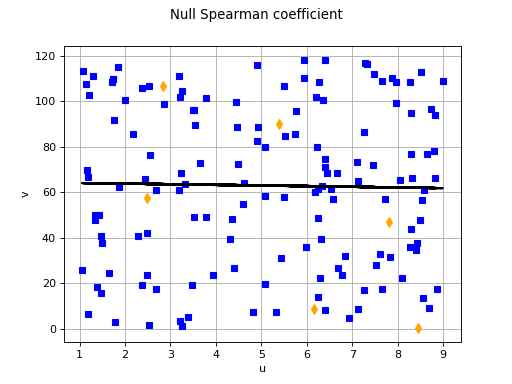Uncertainty ranking: Spearman’s correlation¶
This method deals with analyzing the influence the random vector
has on a random
variable
which is being studied for uncertainty. Here we
attempt to measure monotonic relationships that exist between
and the different components
.
Spearman’s correlation coefficient , defined in
, measures the strength of a monotonic relation between two random
variables
and
. If we have a sample made up of
pairs
,
, …,
, we can obtain
an estimation of Spearman’s coefficient.
Hierarchical ordering using Spearman’s coefficients deals with the case
where the variable monotonically depends on the
variables
. To obtain an
indication of the role played by each
in the dispersion of
, the idea is to estimate the Spearman correlation
coefficients
for each
. One
can then order the
variables
taking absolute values of the Spearman coefficients: the higher the
value of
, the greater
the impact the variable
has on the dispersion of
.
(Source code, png, hires.png, pdf)

API:
Examples:
References:
Saltelli, A., Chan, K., Scott, M. (2000). “Sensitivity Analysis”, John Wiley & Sons publishers, Probability and Statistics series
J.C. Helton, F.J. Davis (2003). “Latin Hypercube sampling and the propagation of uncertainty analyses of complex systems”. Reliability Engineering and System Safety 81, p.23-69
J.P.C. Kleijnen, J.C. Helton (1999). “Statistical analyses of scatterplots to identify factors in large-scale simulations, part 1 : review and comparison of techniques”. Reliability Engineering and System Safety 65, p.147-185
 OpenTURNS
OpenTURNS